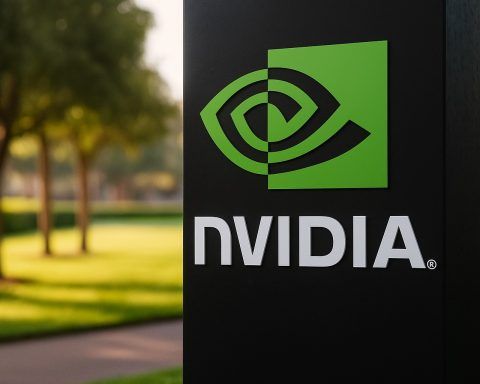- Latest Price: PTL Limited (NASDAQ: PTLE) closed at $0.1861 on Nov 3, 2025, up +13.3% in a day [1]. Pre-market on Nov 4, the stock surged to ~$0.31 (+67%) after an earnings release showed a surprise profit [2].
- Market Cap: Approximately $7 million at the latest close [3] [4], classifying PTLE as a micro-cap penny stock.
- Recent Movement: The stock has gained ~15% in the past two weeks [5], but remains extremely volatile – it fluctuated 38% intraday on Nov 3 (low $0.156 to high $0.215) [6]. PTLE is down ~97% year-to-date and about 95% over the past 12 months despite recent upticks [7].
- 52-Week Range:$0.14 – $15.78 [8]. Shares hit an all-time high of ~$15.78 shortly after its late-2024 IPO, but collapsed below $1 in 2025, triggering Nasdaq compliance issues [9] [10].
- Notable Headlines: Posted first-half 2025 net income of $1.21 M (up +278% YoY) despite a 13% revenue decline [11]. Facing Nasdaq delisting warnings for low share price and market cap [12] [13]. Shareholders approved a dual-class stock structure and reverse share split plan in June to address listing requirements [14] [15].
Recent News – Earnings Spark a Relief Rally
PTL Limited’s latest financial report (released Nov 3, 2025) revealed an unexpected profit, igniting a sharp rally in its beaten-down stock. The Hong Kong–based marine fuel logistics company announced unaudited results for the six months ended June 30, 2025, highlighting a net income of $1.21 million, up from just $0.32 M in the same period a year prior [16]. This 277% profit jump came despite revenue falling 13.4% to $43.56 M in H1 2025 [17]. Gross profit was thin at $0.55 M (1.3% margin), down from $1.14 M (2.3% margin) a year ago [18], reflecting razor-thin margins in the bunkering business. Notably, PTL recorded a one-time $2.4 M reversal of a credit loss provision, which boosted operating profit to $1.77 M [19]. “PTL Limited’s ability to maintain profitability despite a reduction in revenue” is seen as a positive sign for its market positioning [20].
Market Reaction: Investors cheered the return to profitability. PTLE shares jumped +13% on Nov 3 ahead of the earnings release, then spiked over 60% in pre-market trading on Nov 4 [21]. Early on Nov 4, the stock traded around $0.31, nearly doubling from the prior close [22]. This marks a dramatic short-term rebound for the penny stock. However, even at $0.31, PTLE remains “firmly in penny stock territory, making it a risky bet for investors” as one analyst noted [23]. Indeed, at ~$0.30 the stock is still down roughly 98% from its 52-week highs.
Earnings Highlights: PTL’s first-half 2025 revenue of $43.56 M was down from $50.27 M in H1 2024, mainly due to slightly lower fuel volume sold (79k metric tons vs 82k) [24] and possibly softer fuel prices. Cost of revenue fell accordingly, keeping gross margin around a razor-thin 1–2% [25]. Selling, general & admin expenses jumped to $1.17 M (up 63% YoY) as the newly listed company incurred higher staffing, legal, and compliance costs [26]. Crucially, a $2.4 M bad debt provision reversal turned what would have been a small operating loss into a profit [27] [28]. Without that accounting gain, PTL’s net income would have been near breakeven. Still, the company avoided a loss and reported positive EPS of $0.05 for H1 2025 [29]. There was no earnings call transcript or management guidance publicly available (PTL did not host a typical investor call due to its small size), but the press release emphasized the company’s resilience and “one-stop” bunkering service model [30] [31].
Stock Performance – Wild Swings and Heavy Volume
PTLE’s stock has experienced extreme volatility since its U.S. IPO in October 2024. Initially priced around $5 for its Nasdaq debut [32], the thinly-traded stock skyrocketed to nearly $16 at its peak (likely amid speculative trading common in small-cap Chinese/Asia-Pacific listings) [33]. However, those gains quickly evaporated. By mid-2025 the share price had cratered below $1, and by October 2025 it hit a low of $0.1414 [34]. Year-to-date through early November, PTLE had plummeted ~97% – a collapse reflecting both company-specific dilution and broader risk-off sentiment toward micro-cap stocks.
Several price jolts punctuated this downtrend. Notably on June 18, 2025, PTLE stock “rocketed higher” over +200% in a single day after a shareholder meeting approved key proposals [35] [36]. On that day, volume exploded to 95 million shares traded (versus a 3-month average of ~4.3 M) [37]. This frenzy was triggered by investors voting in favor of a dual-class share structure and a potential reverse stock split (share consolidation) to fix compliance issues (details below). The stock, which had closed around $0.10, briefly hit roughly $0.30+ in pre-market action [38]. However, the rally was short-lived; PTLE gave back those gains in subsequent weeks amid profit-taking and dilution concerns. By early September 2025, shares were hovering around $0.16 and had a Relative Strength Index (RSI) near 28, indicating oversold conditions [39].
In recent weeks (late Oct 2025), PTLE showed signs of base-building. The stock oscillated in the mid-teens cents, then began climbing in late October – possibly as speculative traders anticipated the earnings report. From an intraday low of ~$0.15 on Oct 29, it rebounded over 20% by Nov 3 [40]. Technical analysts noted rising volume alongside price, which is “considered to be a good technical signal” of momentum [41]. By Nov 3, the stock’s 14-day average volatility was an exceptionally high 17% per day [42], underlining the risk for investors. “This stock may move much during the day… considered ‘high risk,’” cautioned one technical analysis service [43]. Indeed, PTLE’s 90-day beta is effectively immeasurable, given its outsized swings unrelated to the broader market.
Nasdaq Compliance Risks & Corporate Actions
PTL Limited is racing against the clock to remain listed on the Nasdaq. In July 2025, the company received two deficiency notices from Nasdaq for failing continued listing requirements [44] [45]:
- Market Capitalization: Nasdaq’s Capital Market requires a minimum $35 million market value. In July, PTL’s market cap had sunk to just ~$8.5 M [46]. The company was given until January 14, 2026 to regain a $35M market cap for at least 10 consecutive days [47].
- Share Price: PTLE’s stock traded below the $1.00 minimum bid price for over 30 consecutive business days, also triggering a compliance deadline of Jan 14, 2026 to lift the share price above $1 for 10+ days [48].
If PTL fails to meet either threshold by Jan 2026, it could face delisting from Nasdaq. However, Nasdaq may grant a further 180-day extension on the bid price rule if the company meets other criteria (like agreeing to implement a reverse stock split) [49]. PTL’s management has stated it will take “all reasonable measures” to regain compliance within the grace periods [50].
Shareholder Response: To address these issues, PTL’s shareholders held a special meeting on June 16, 2025. They approved five proposals, notably:
- the creation of a dual-class share structure (splitting stock into Class A and Class B shares), and
- a share consolidation (reverse split) contingent on board approval [51].
These steps aim to strengthen corporate control and boost the per-share price. A dual-class structure would give insiders (Class B) enhanced voting rights, while a reverse split could instantly raise the stock price above $1 by reducing the number of shares. “All proposals were approved” and the meeting “went well for the company,” according to TipRanks coverage [52]. The market initially reacted euphorically (hence the 200% surge on Jun 18) [53], anticipating a tighter share float and insider confidence.
Status: As of Nov 4, 2025, PTL had not yet effectuated the share consolidation. The stock remains below $1, so a reverse split (perhaps in the range of 1-for-5 or 1-for-10) appears likely before the January deadline. PTL also completed a $7.14 M secondary offering in April 2025 to raise capital [54], which unfortunately added to share count and downward pressure on the stock (the offering was priced at $1.00/share per earlier filings). The company’s public float is about 37.5 M shares [55]; this could shrink to ~3.75 M shares if a 1-for-10 reverse split is executed, theoretically boosting the price by 10x (e.g. $0.20 → $2.00). Management’s hope is that improved fundamentals plus these corporate actions will avert a delisting. For now, Nasdaq’s notices “do not immediately affect” PTLE’s listing status [56] – the stock still trades normally under ticker PTLE.
Industry Outlook – Marine Fuel Sector Trends
PTL operates in the niche marine fuel (“bunkering”) logistics industry, primarily serving ship operators in the Asia-Pacific. This sector is influenced by global shipping activity, fuel price dynamics, and environmental regulations. Key industry trends include:
- Moderate Demand Growth: Global bunker fuel consumption is projected to grow steadily in coming years. One report forecasts the market value to rise from ~$33 B in 2025 to over $53 B by 2032 (~7% CAGR) [57]. Expanding maritime trade is a major driver – the UNCTAD expects seaborne trade volumes to increase ~2.4% annually through 2029 [58]. As a facilitator for vessel refueling, PTL could benefit from this rising tide of shipping activity. Notably, Asia-Pacific is expected to remain the largest bunker fuel market, accounting for ~40% of global demand [59]. PTL’s focus on Hong Kong, Singapore, and regional ports aligns with this dominant market.
- Thin Margins & Competition: Bunkering is a high-volume, low-margin business. PTL’s recent gross margin was barely 1–2% [60], reflecting intense competition and commodity-like dynamics of fuel sales. Larger established players and oil majors typically control the physical fuel supply. As a newer “bunkering facilitator,” PTL must leverage relationships with upstream suppliers and offer trade credit to customers to carve out a niche [61]. Any slight mispricing or extra costs (barging fees, port fees) can wipe out profit. This is evident in PTL’s financials – e.g., gross profit fell 52% YoY in H1 2025 as revenue declined [62]. Investors should note that such paper-thin margins (≈2%) leave little room for error, a point flagged by analysts reviewing PTL’s weak financial health metrics [63].
- Fuel Price Volatility: Changes in oil/marine fuel prices impact PTL’s top line (revenue) significantly, though the effect on profit is less direct. For example, PTL’s revenue dropped 13% in H1 2025 partly due to slightly lower volume, but also likely due to lower average fuel prices vs. the prior year [64]. Since cost of goods sold moves in tandem (fuel purchased), the absolute dollar gross profit stays small. In general, higher fuel prices increase revenue (and working capital needs), whereas price crashes can squeeze suppliers but might allow better margins on inventory. PTL must manage credit risk carefully when fuel prices swing, as customers may default if prices dive (the company’s reversal of a credit loss suggests prior provisioning for such risks [65]).
- Regulatory Shifts: The marine industry is gradually transitioning to cleaner fuels (e.g., LNG bunkering, low-sulfur fuel per IMO 2020 rules, and in the long term, alternative fuels for decarbonization). While traditional heavy fuel oil still dominates today’s bunker market, alternative fuels are expected to grow. By 2030, new low-GHG fuels and LNG could take a significant share of vessel energy consumption [66]. PTL may need to adapt its product mix (e.g., supplying very-low-sulfur fuel oil (VLSFO) or marine gasoil) and possibly expand into new fuel types to stay competitive. The company already offers low-sulfur fuel to comply with emission standards [67]. Environmental regulations could compress margins further but also create new service opportunities (consulting on fuel compliance, etc.).
- Geopolitical Factors: The bunkering sector is not immune to geopolitical events. Conflicts in oil-producing regions or sanctions can disrupt fuel supply chains and cause price spikes. Moreover, port-specific factors (such as IMO sulfur emission control areas, port fees, local competition) affect bunkering at hubs like Hong Kong and Singapore. So far, PTL’s disclosures haven’t indicated major geopolitical supply issues, but investors should be aware that any oil market volatility or trade disruptions could quickly flow through to PTL’s operations.
In summary, the industry backdrop for PTL is mixed: steady demand growth and Asia-Pacific strength support a tailwind, but ultra-thin margins, evolving fuel standards, and external risks keep the operating environment challenging. PTL’s modest profitability in H1 2025 is encouraging, but sustaining it will require execution in a tough market.
Analyst & Expert Opinions
As a very small cap stock, PTLE has no coverage from major Wall Street analysts – there are no consensus earnings estimates or official price targets available [68]. However, financial commentators and algorithmic analysis have weighed in:
- Financial Bloggers & ROE Analysis: Some analysts have pointed out PTL’s surprisingly strong Return on Equity. For the TTM period to June 2024, PTL achieved an ROE of ~22% with zero net debt on the balance sheet [69] [70]. “One positive for shareholders is that PTL does not have any net debt! Its ROE suggests it is a decent business,” noted Simply Wall St, highlighting that PTL’s ROE exceeded the industry average of 15% [71] [72]. This implies that – at least historically – PTL was earning solid returns on its small equity base without leverage, a sign of efficient operations. However, that ROE was aided by one-off gains and may not be sustainable; indeed, PTL’s annual net income has been volatile. No-debt is a double-edged sword: while it indicates conservative finance, it could also limit growth if the company can’t easily scale operations with borrowed funds. Still, the lack of debt means “the company generates profit of $0.22 for every $1 of shareholder investment” in that period [73], an encouraging metric if it can be maintained.
- TipRanks & Media Commentary: TipRanks News highlighted the stock’s speculative nature. After the June shareholder meeting rally, one report cautioned that PTLE “has dropped 95% over the past 12 months” and remains a high-risk penny stock despite occasional spikes [74]. The same piece noted the massive trading volumes on rally days (95 M shares) as a sign of retail trader frenzy [75]. In another update, TipRanks’ auto-newsdesk summarized PTL’s H1 results, emphasizing the improved profit and suggesting it “could positively impact stakeholder confidence” [76]. However, TipRanks’ quantitative signals still rate PTLE a “Strong Sell” from a technical standpoint [77], likely due to its sustained downtrend prior to the latest bounce.
- Benzinga & Others: Benzinga featured PTLE in a September list of “oversold energy stocks.” It mentioned that PTL had an RSI of 28.6 (oversold) and had fallen ~17% in the month following the Nasdaq notice news [78]. This suggests some observers see potential for a mean-reversion bounce (which indeed seems to be playing out with the recent rally). No fundamental commentary from sell-side analysts was provided, as none officially cover PTL, but the inclusion signaled that PTL’s depressed price had caught the attention of value-oriented traders scanning for beaten-down energy names.
- Investor Forums: On social media and trading forums, PTLE has a small following of retail traders. Some are optimistic that the combination of growing revenues (PTL’s 2024 full-year revenue was $98 M per filings) and any successful turnaround could make the stock a “multi-bagger” from sub-$1 levels. Skeptics, however, point to the dilution and the risk of Nasdaq delisting as reasons to avoid the stock. No institutional ownership of note has been reported, meaning the float is likely dominated by retail investors and insiders – which contributes to volatility.
Forecasts & Investment Outlook
Price Forecasts: In absence of official analyst targets, various algorithmic models give a wide range of scenarios for PTLE’s future price:
- Short-Term (3 months): Technical forecasting site StockInvest.us projects that PTLE will “fall ~6.95% over the next 3 months”, with a 90% probability of trading between $0.129 and $0.199 by early 2026 [79]. This cautious forecast reflects the still-negative trend momentum despite the recent pop. The model considers PTLE to be in the middle of a falling channel and suggests any further near-term upside may be limited by overhead resistance around ~$0.21 [80]. Support is seen around ~$0.17–0.18, which if broken could lead to new lows [81]. In essence, the technical view is that PTLE might grind lower or stabilize in the next quarter absent a major positive catalyst.
- Medium-Term (2026): An AI-based predictor, Intellectia, paints a slightly more positive picture for mid-2026. It forecasts PTLE trading on average around $0.23–$0.25 by mid-2026, with potential swings between ~$0.14 on the low end and ~$0.29 on the high end during the year [82] [83]. For example, by July 2026 it projects an average price of $0.25 (range $0.24–$0.29) [84], which would be roughly 35% above the latest close. These models assume the company survives and continues on its current trajectory. The AI notes frequent monthly variability (some months down, some up), which underscores that volatility will likely persist.
- Bearish Scenario: On the other extreme, at least one model essentially predicts a wipe-out. WalletInvestor’s algorithm infamously forecasts PTLE could “drop from $0.186 to $0.000001 (−100%)”, implying a near-total collapse in value [85]. In their view, PTLE is a highly risky penny stock with a significant probability of going to zero (whether through bankruptcy, delisting, or other failure). While this is a harsh outlook, it reflects the genuine risk that micro-cap companies can lose all value. Notably, WalletInvestor flatly states the stock is “not expected to hit $1 in the next year” or anytime soon [86].
The reality will depend on PTL’s execution and external market conditions. No human equity analysts have published 12-month price targets, but investors should be aware that major upside or downside is possible. For instance, a successful reverse split and improved earnings in 2026 might draw in new investors and revalue the stock higher. Conversely, failure to regain Nasdaq compliance or a downturn in business could send PTLE to the OTC market, likely crushing the share price.
Investor Considerations: At around $0.20, PTL Limited represents a high-risk, high-reward situation. Bulls argue that the company is profitable (on an interim basis), debt-free, and operating in a steady industry – a combination that could eventually garner a higher valuation. With trailing twelve-month revenue near $98 M and a market cap of just ~$7 M, PTL’s price-to-sales ratio is an ultra-low ~0.07 [87]. If the company can grow margins or revenue, the stock might appear “undervalued” on a fundamentals basis. A SimplyWallSt valuation model even estimated a fair value around $1.16/share based on discounted cash flows (10x the current price) [88], though such models are very sensitive to assumptions and likely pre-date the dilution.
On the other hand, bears caution that PTL’s tiny market cap and looming delisting make it speculative. The company’s own filings acknowledge material weaknesses and a limited operating history (founded 2023) [89]. The need for a reverse split could also signal distress – often, post-split stocks face renewed selling pressure. Additionally, maintaining compliance with the $35 M market cap rule may require PTL’s stock to roughly quintuple from current levels or for the company to pursue mergers/asset sales. Any further equity issuance (to raise capital for growth) would dilute existing shareholders unless the business outlook dramatically improves.
In summary, PTL Limited’s stock is a volatile micro-cap play straddling the line between turnaround potential and collapse. The recent earnings news provided a spark of hope, showing the company can eke out a profit and sending the stock higher. However, significant challenges remain ahead – from meeting Nasdaq’s criteria to proving that it can achieve sustainable growth in a competitive, low-margin industry.
For risk-tolerant investors, PTLE will be one to watch in the coming months as the “delisting countdown” to January 2026 approaches. Any updates on the planned share consolidation or improved second-half results could be catalysts. Conversely, lack of progress on compliance or any deterioration in financials could swiftly erode the stock’s nascent gains. Caution is warranted, but so is attention – this penny stock’s next moves could be dramatic, one way or the other.
Sources: PTL Limited official press releases and SEC filings; Nasdaq and GlobeNewswire announcements [90] [91]; real-time market data and technical analysis from StockAnalysis, StockInvest.us [92] [93]; sector outlook from Coherent Market Insights [94] [95]; commentary from TipRanks, Yahoo Finance (Simply Wall St), and Benzinga [96] [97] [98].
References
1. stockanalysis.com, 2. stockanalysis.com, 3. stockanalysis.com, 4. www.tipranks.com, 5. stockinvest.us, 6. stockinvest.us, 7. www.tipranks.com, 8. stockanalysis.com, 9. www.investing.com, 10. www.investing.com, 11. www.tipranks.com, 12. www.investing.com, 13. www.investing.com, 14. www.tipranks.com, 15. www.tipranks.com, 16. www.globenewswire.com, 17. www.globenewswire.com, 18. www.globenewswire.com, 19. www.tipranks.com, 20. www.tipranks.com, 21. stockanalysis.com, 22. stockanalysis.com, 23. www.tipranks.com, 24. www.globenewswire.com, 25. www.globenewswire.com, 26. www.globenewswire.com, 27. www.globenewswire.com, 28. www.tipranks.com, 29. www.globenewswire.com, 30. www.globenewswire.com, 31. www.globenewswire.com, 32. stockanalysis.com, 33. stockanalysis.com, 34. stockanalysis.com, 35. www.tipranks.com, 36. www.tipranks.com, 37. www.tipranks.com, 38. www.tipranks.com, 39. www.benzinga.com, 40. stockinvest.us, 41. stockinvest.us, 42. stockinvest.us, 43. stockinvest.us, 44. www.investing.com, 45. www.investing.com, 46. www.investing.com, 47. www.investing.com, 48. www.investing.com, 49. www.investing.com, 50. www.investing.com, 51. www.tipranks.com, 52. www.tipranks.com, 53. www.tipranks.com, 54. stockanalysis.com, 55. stockanalysis.com, 56. www.investing.com, 57. www.barchart.com, 58. www.barchart.com, 59. www.barchart.com, 60. www.globenewswire.com, 61. www.globenewswire.com, 62. www.globenewswire.com, 63. www.investing.com, 64. www.globenewswire.com, 65. www.globenewswire.com, 66. www.woodmac.com, 67. stockanalysis.com, 68. stockanalysis.com, 69. news.futunn.com, 70. news.futunn.com, 71. news.futunn.com, 72. news.futunn.com, 73. news.futunn.com, 74. www.tipranks.com, 75. www.tipranks.com, 76. www.tipranks.com, 77. www.tipranks.com, 78. www.benzinga.com, 79. stockinvest.us, 80. stockinvest.us, 81. stockinvest.us, 82. intellectia.ai, 83. intellectia.ai, 84. intellectia.ai, 85. walletinvestor.com, 86. walletinvestor.com, 87. stockanalysis.com, 88. finance.yahoo.com, 89. www.globenewswire.com, 90. www.investing.com, 91. www.globenewswire.com, 92. stockanalysis.com, 93. stockinvest.us, 94. www.barchart.com, 95. www.barchart.com, 96. www.tipranks.com, 97. news.futunn.com, 98. www.benzinga.com












